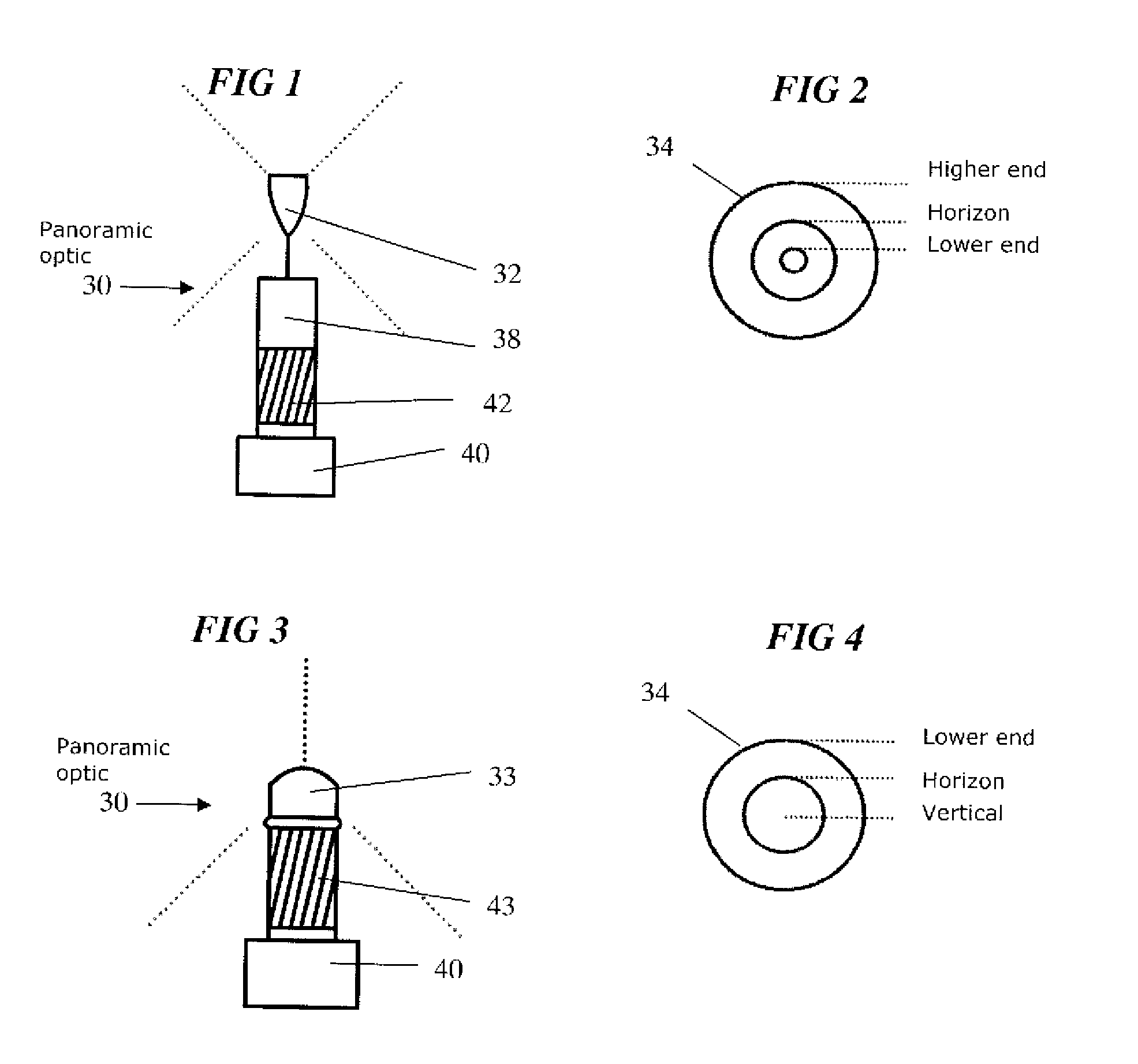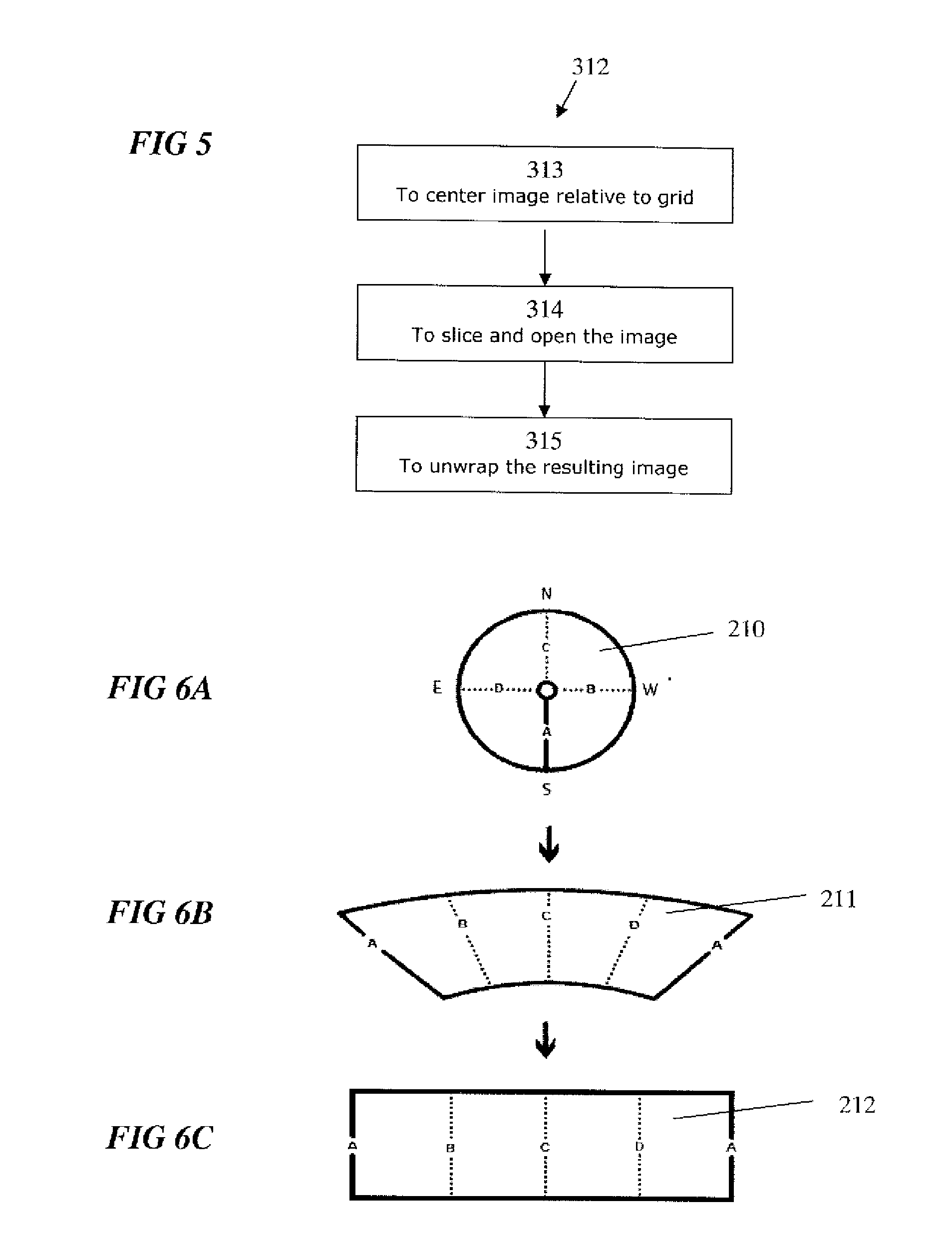Current virtual tours photographic techniques suffer from several limitations.
Images captured from a
single camera rotating on its
nodal point can be stitched seamlessly but this solution can not be used for applications involving axial translation, where, for example, images are captured from a vehicle in motion.
This method consumes significant
processing power and bandwidth for respectively correcting and transmitting the images whenever fast user motion is involved during navigation, and is therefore not optimal for providing a seamless navigation experience at relatively high user directed panning speed.
Limitations of current
virtual tour technology, such as object
occlusion, have had the detrimental result on virtual tours never materializing outside of the real estate industry.
These products are limited to outdoor views wherein any two consecutive points of view are positioned at a relatively long distance from each other.
Such panoramic images can not provide accurate representation of geometric objects, of for example buildings, due to the inherent discontinuity (break) of such panoramic images, this discontinuity is due to the physical impossibility of superposing a single
nodal point from multiple cameras and view angles.
Furthermore, “STREET VIEW” products and the like provide images which suffer from trapezoidal
distortion whenever the
view angle is not pointing toward the
horizon; this
distortion is due to the perspective.
Although geometrically correct, “STREET VIEW”'s images do not reflect human vision behaviours, which keep vertical lines mostly parallel whenever a viewer tilts its view gently above or below the
horizon.
Google “STREET VIEW” also creates
ground plane distortion where planar ground seems to be inclined due to the unwanted motion of the cameras caused by the inertial force.
Other current walk-through products, such as “EVERYSCAPE” (www.everyscape.com by Everyscape, Waltham,
Mass.) and “EARTHMINE” (www.earthmine.com by Earthmine inc., Berkeley, Calif.) also produce trapezoidal distortion, which makes them unfit for applications requiring continuous undistorted images (i.e. images which more closely correspond to human vision), as for example, for virtual shopping.
The trapezoidal distortion drawback is inherent also to virtual walk-through applications based on 3D virtual images, which can be used for example for visiting a virtual building using real-time 3D engine, such as Second Life (www.secondlife.com by Linden Research Inc, San Francisco, Calif.) or video games.
This product does not allow user to pan and tilt its viewing angle during its displacement along the travel path.
In sum, current virtual walk-through applications and systems suffer several important limitations.
Views suffer from high
occlusion rate, as lots of objects are never visible at all along pathways.
The '232 solution is not optimized however for walk through applications allowing fast movement across the horizontal plane beyond 120°; moreover, the '232 patent does not disclose
broadcasting images of different
image resolution, meaning that it only covers
broadcasting of image of the highest possible
image resolution.
However, this method is not suited to the optimal transmission of full panoramic images in situations where user travels along predefined pathways consisting of several view points in a linear arrangement within a network of pathways within the walkthrough space.
Additionally, being view direction sensitive, this method is not optimized, in terms of
response time, to allow user to change his travel plan, for example, by making a U-turn or to travel along another pathway.
Finally as this method allows travel in any direction (along a predefined pathway) the amount of data download to represent a given view point is greater and therefore less suited for fast and responsive viewing experience on
the Internet or other
network media having limited bandwidth.
Consequently, no
system of the prior art provides a
system optimized for seamless broadcasting of fluid motion where the user can orientate (pan and tilt) the
field of view during motion and where the user can stop the motion anywhere along the travel path, in order to discover local objects in detail without
occlusion.
Integration of virtual objects (such as images, icons, etc) to panoramas has been limited to the integration of two dimensional objects in specific view point images wherein said objects are not visible from distant view points.
Consequently, no prior art system provides a system and advanced features based on geographical information such as the ability to pin an element of information on any location in a view, such element staying spatially fixed to the point during the travel.
 Login to View More
Login to View More  Login to View More
Login to View More 


